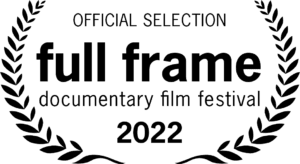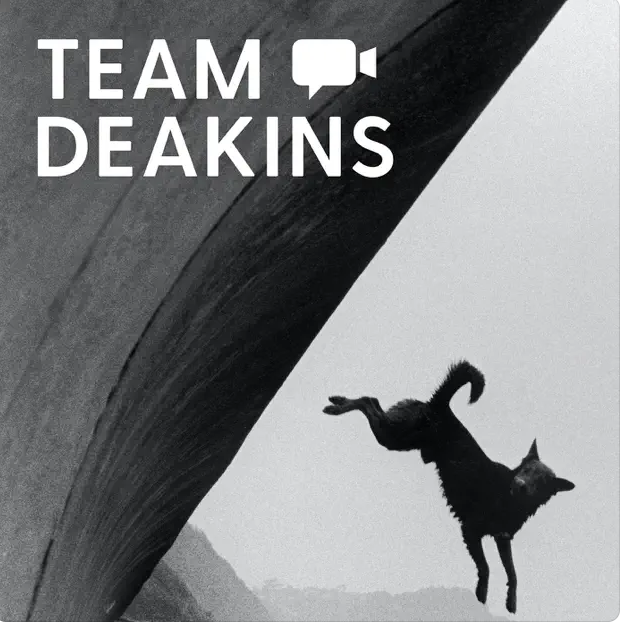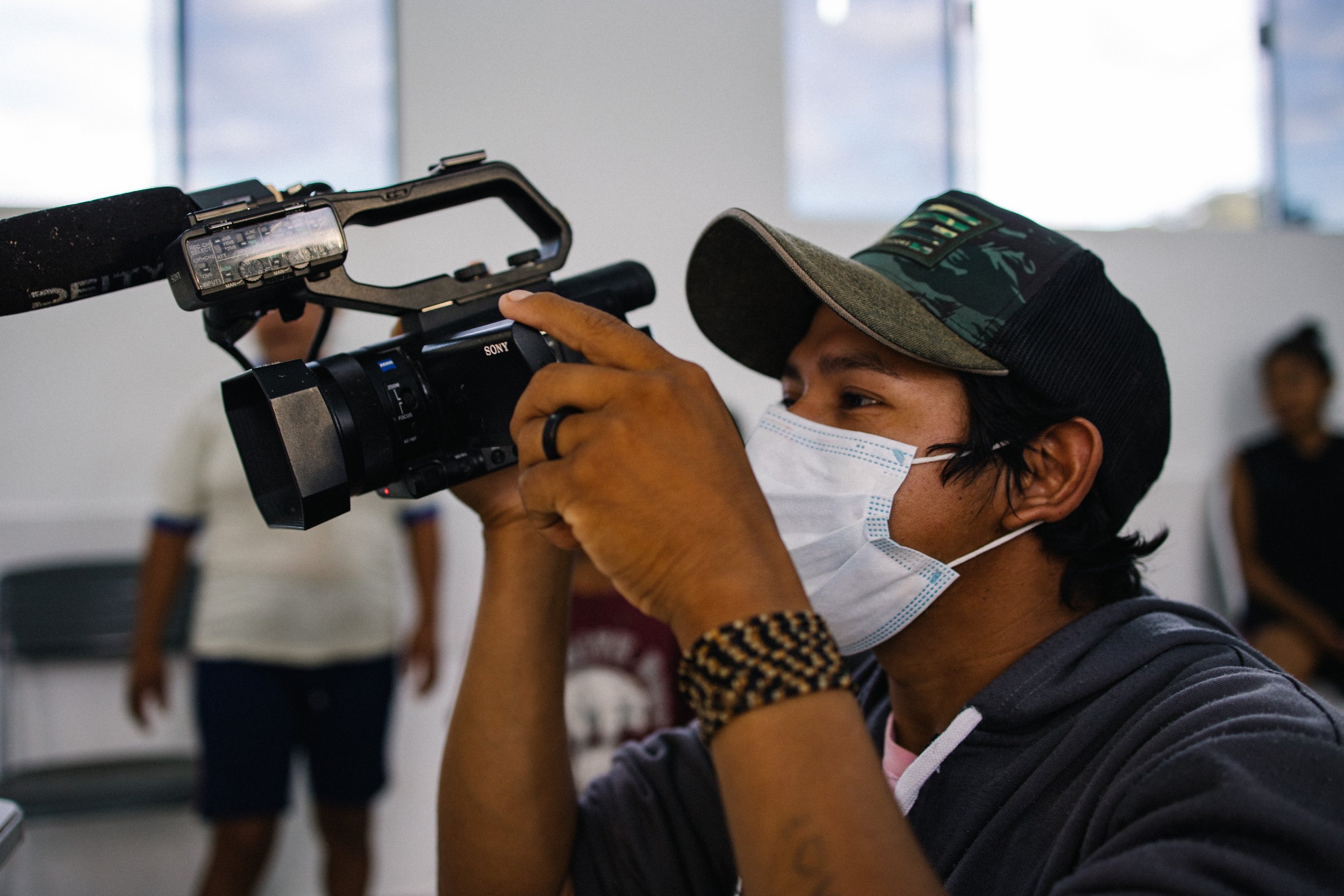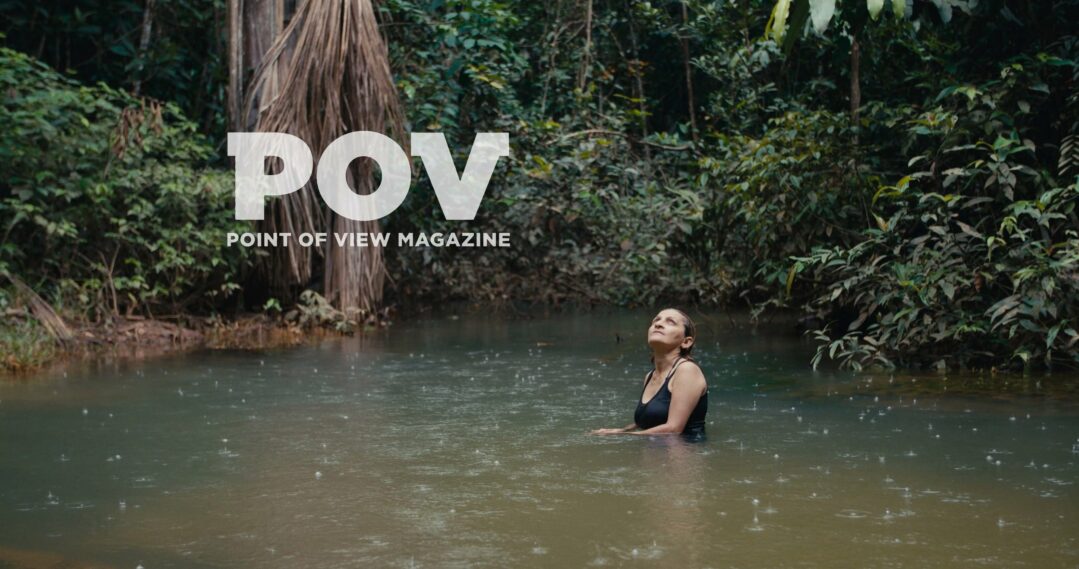

















Nas noticias
‘Fire Of Love,’ ‘The Territory,’ ‘All That Breathes’ Lead The Way As Cinema Eye Honors Nominations Announced
The Oscar prospects for Fire of Love, O território, and All That Breathes got a significant boost today with the announcement of the nominations for the 16th Annual Cinema Eye Honors.
Sara Dosa’s Fire of Love and Alex Pritz’s O território tied with a leading seven nominations apiece, while All That Breathes, from director Shaunak Sen, was recognized in half a dozen categories.
TEAM DEAKINS PODCAST : ALEX PRITZ – Documentarian
This week, Team Deakins is so happy to invite documentary filmmaker Alex Pritz (THE TERRITORY, MY DEAR KYRGYSTAN) to join us for a wide ranging conversation. Alex explains to us how his background in science spurred him into filmmaking, and still drives the larger questions his films attempt to ask. We also discuss the moral issues raised by documenting real life events – and perhaps more importantly, real people. And then we get into the importance of being 100 percent honest in grappling with those issues.
IDA Documentary Awards Shortlists Announced: ‘Fire Of Love,’ ‘The Territory,’ ‘All That Breathes’, ‘All The Beauty And The Bloodshed’ Gain Traction
A handful of awards season frontrunners is starting to emerge with the announcement today of the IDA Documentary Awards Shortlists.
O território Director Alex Pritz on Local Conflicts, Narrative Control, and Ethical Choices
When watching documentarian Alex Pritz’s O território, the conflict becomes all-consuming. The Uru-eu-wau-wau, less than 200 of them, become the clear heroes. The settlers and farmers, all of which are attempting to seize Indigenous land to make it their own, become the natural villains, despite their own struggles. Pritz stands behind the camera, shooting each side of the conflict, giving air time to those that protect and light this small section of the Amazon rainforest, allowing viewers to make their own judgments.
Uru-eu-wau-wau do Brasil documenta vitória COVID-19 com novo vídeo
Quando o Uru-eu-wau-wau foram contatados pela primeira vez em 1981, doença e morte seguiram logo depois. Com anticorpos limitados para combater patógenos estranhos, doenças infecciosas como tuberculose e sarampo cobraram um preço desastroso. De uma comunidade indígena vibrante, com milhares no início de 1900, mais da metade morreu.
Quando a epidemia de coronavírus chegou ao Brasil em março de 2020, os acontecimentos da década de 1980 ganharam grande destaque na memória coletiva da comunidade.
A Floresta Amazônica está quase acabando
Há cinco décadas, o Brasil incentivou milhões de pessoas a colonizar a Amazônia. Hoje, seus pátios de madeira, cercados de gado e fazendas de soja ficam às margens de uma floresta em extinção. Alimentada por fontes obscuras de capital e crescente demanda por carne bovina, uma fronteira violenta e corrupta está agora avançando para terras indígenas, parques nacionais e uma das partes mais preservadas da selva.
146: Alex Pritz em “The Territory” em Sundance
A queima da floresta amazônica é uma tragédia global. O cineasta Alex Pritz colabora com membros da comunidade indígena Uru-eu-wau-wau para documentar o que está acontecendo O território. Estreando em Sundance, o filme foi aclamado como “fascinante” (Variety), “belíssimo e às vezes engenhosamente concebido” (Indiewire). Alex descreve a produção do filme com o apresentador Thom Powers.
Da Amazônia a Glasgow: Um ativista indígena diz: 'Não temos mais tempo.'
A mulher em destaque não era Greta Thunberg, mas Txai Suruí, uma ativista indígena do clima de 24 anos do Brasil, fazendo sua primeira aparição no cenário mundial. No dia de abertura da cúpula global do clima em Glasgow, ela fez um apelo eloquente chamando a atenção para o desmatamento devastador da Amazônia.
“A Terra está falando”, disse Suruí. “Ela nos diz que não temos mais tempo.”
“COVID nos ajudou a descobrir uma nova maneira de criar este filme” | Alex Pritz, O Território
O território é um filme sobre conflitos de terra em território indígena na Amazônia brasileira, que foi co-criado com a comunidade Uru-eu-wau-wau.
Como podemos usar o filme para criar mudanças sociais
Os filmes sempre foram um ótimo meio para inspirar ou servir como ferramenta para a mudança social. Eles também podem fazer com que o público experimente diferentes tipos de emoções, expô-los a novas perspectivas e, o mais importante, podem servir como um meio para cineastas, produtores e comunicadores trazerem mais consciência para certas questões ou causas, ajudando a mudar os corações e mentes das pessoas. pessoas sobre assuntos urgentes.
Lotes da floresta amazônica vendidos através de anúncios do Facebook Marketplace
Partes da floresta amazônica do Brasil estão sendo vendidas ilegalmente no Facebook, descobriu a BBC.
As áreas protegidas incluem florestas nacionais e terras reservadas aos povos indígenas.
A guerra pela floresta tropical
Reservada para um grupo indígena isolado, a reserva brasileira Ituna-Itatá agora foi fortemente desmatada – uma ilustração sombria das forças intratáveis que estão destruindo a Amazônia.
Tribos da Amazônia estão usando drones para rastrear desmatamento no Brasil
A tribo Uru-Eu-Wau-Wau não teve contato com o mundo exterior até o início dos anos 1980. Agora, eles são uma das várias comunidades indígenas que usam drones para encontrar e documentar a extração ilegal de madeira em seu território na Amazônia brasileira
Amazon é menos capaz de se recuperar de secas e extração de madeira, segundo estudo
A Amazônia está perdendo sua capacidade de se recuperar de distúrbios como secas e mudanças no uso da terra, relataram cientistas na segunda-feira, aumentando a preocupação de que a floresta tropical esteja se aproximando de um limite crítico além do qual grande parte será substituída por pastagens, com vastas consequências para a biodiversidade e das Alterações Climáticas.
Os cientistas disseram que sua pesquisa não identificou quando esse limite, que eles descreveram como um ponto de inflexão, pode ser alcançado.
Críticas sobre filme
How an Indigenous Amazonian Group Worked With Filmmakers to Make O território
In the western Brazilian state of Rondônia, deep inside the Amazon, a swath of rainforest spans an area two and a half times the size of Delaware—a rich green oasis surrounded by pale farmland. Fewer than 200 people live here: the Uru-eu-wau-wau Indigenous people, just a fraction of the population of thousands the Brazilian government first made contact with in the 1980s.
The Uru-eu-wau-wau—and their tireless fight against deforestation—are the subjects of the National Geographic documentary O território, produced in association with TIME Studios, which releases in theaters on Friday.
In a besieged Amazon, people take up cameras to save their land
Forty years ago, Brazilian officials made first contact with a tribe of Indigenous warriors called the Uru-Eu-Wau-Wau in the rain forests of the western state of Rondônia. The contact was the culmination of a years-long pacification campaign by FUNAI, Brazil’s Indigenous affairs agency, to lure the tribe from the jungle with gifts, such as knives, axes, cloth, and mirrors.
The ramifications of that contact, and the tribe’s resolve to defend its land and traditions, is now the subject of a powerful new documentary, O território, released by National Geographic Documentary Films in select theaters on August 19.
‘The Territory’ Film Review: Amazonian Eco-Warriors Fight Back With Arrows — and Cameras
Engines roar, blades are sharpened, recoil starters sputter and whine. The opening of Alex Pritz’s Sundance-winning documentary “The Territory” prepares the audience for a real “Chainsaw Massacre,” one that plays out in the Amazon rainforest. But this film is far more terrifying, and galvanizing, than Tobe Hooper’s ‘70s slasher classic.
‘The Territory’ – cinematic hope in tragedy
The film begins in 2018, with an Indigenous community’s struggle to protect what Pritz calls their “island of rainforest surrounded by farms.”
“In the 1980s,” reads an opening title, “the Brazilian government first contacted the Uru-eu-wau-wau people. From a population of thousands fewer than 200 remain.”
Bitaté, a clear-eyed teen activist, is among them, swimming in a tributary, romping with other kids, and working with Neidinha, a middle-aged non-Indigenous activist he refers to as a second mother, to combat a national government that seems hellbent on destroying his home.
‘The Territory’ Review: A Revelatory and Immersive Documentary About the Ongoing Crisis in the Amazon
Documentaries that set out to tackle complex subjects and narratives in a single feature can be tricky to pull off. While there is often a necessity to condense potentially decades of context to fit within a bounded runtime, history is much broader and more expansive than that. What makes O território such a stunning and standout work is that it never loses sight of this history that is inexorably intertwined with those living with its repercussions now. A debut feature from director Alex Pritz that won multiple awards at the Sundance Film Festival, it is now getting a release from National Geographic in a moment where it remains as painfully and profoundly relevant as ever. It centers on the Uru-eu-wau-wau Indigenous people and the precarity they face in modern-day Brazil, where the Amazon they have lived in for generations is being decimated. Making matters worse was the election of the far-right nationalist Jair Bolsonaro who has eroded protections for the land and the people that are still living in it.
The Territory Review: An Eye-Opening Look at a Fight Against Deforestation
An opening text scroll in director Alex Pritz’s documentary O território recounts that Brazil’s Uru-eu-wau-wau people were first contacted by the country’s government in the 1980s. A bit over three decades later, as we glean from the film’s embedded point of view on their lives, these native Amazonians have adopted some of the accoutrements of modernity. They ride motorcycles, wear soccer jerseys, and use smartphones to follow Brazil’s 2018 general election, the latter of which resulted in an ongoing disaster for their people following the victory of far-right nationalist Jair Bolsonaro.
Essential Environmental Doc The Territory Platforms the Plight of Indigenous Brazilians
The violent claw of colonization continues to raze Indigenous land well into the 21st century, a point made startlingly clear in Alex Pritz’s urgent documentary O território. Though the fight against climate change and genocide has been a lifelong effort amid various Indigenous groups around the globe, this lean, visually striking film focuses on the the Uru-Eu-Wau-Wau people, living in a verdant expanse in the Brazilian Amazon that sees its once vast perimeter shrinking exponentially each day.
‘The Territory’ Review: Saving the Amazon, One Camera at a Time
“Save the rainforest” has been a constant refrain among environmentalist groups for the past half-century, but no recent film captures the immediacy of the threat better than “The Territory,” Alex Pritz’s documentary feature debut, which had its premiere earlier this year at Sundance.
National Geographic Documentary Films acquired the rights to the movie after it screened, and given the distributor’s current interest in gripping thrillers (“Free Solo,” “Fire of Love”), it’s no surprise that this feature, covering the embittered conflict between Brazilian cattle ranchers and an Indigenous group in the Amazon rainforest, fits right into its lineup. But “The Territory” is more than meets the eye, revealing its most profound observations in stages across its running time. The film’s luscious cinematography captures the sun-dappled island of jungle where the Uru Eu Wau Wau reside, a land slowly being consumed by flames as farmers and other settlers illegally raze the forest for pastures, with few repercussions.
Sundance 2022: o território
De vez em quando, surge um filme que simultaneamente eleva sua raiva e evapora sua esperança, enquanto o leva a acreditar, contra toda a lógica, que talvez, se as pessoas certas vencerem, a inevitabilidade do fim sombrio de nossa espécie ainda possa ser apagado. O apelo urgente e visualmente fascinante de Alex Pritz, “O território”, analisando a luta que está sendo travada pelos invasores grileiros e a pequena tribo indígena Uru-Eu-Wau-Wau no Brasil, sobe a essas alturas.
Revisão de 'The Territory': Intense Doc cede o controle narrativo para seus sujeitos indígenas
Dentro Alex Pritzde “O território” — um documentário feito em estreita colaboração com a minguante tribo Uru-eu-wau-wau do Brasil — a imagem em movimento é verdade, verdade é poder, e pegar uma câmera é um ato de recuperação. Situado na interseção explosiva de tecnologia, política e perseguição indígena, o filme é maravilhosamente e às vezes engenhosamente concebido, pintando um retrato íntimo em primeira mão de alegria, dor e comunidade, antes de explodir com uma intensidade estrondosa ao capturar uma alta -estacas luta pela sobrevivência que se desenrola no momento. Mais do que apenas uma crônica de eventos, no entanto, é também uma declaração ousada sobre as lentes através das quais os povos indígenas são frequentemente trazidos para a tela de prata.
'O Território': Crítica do Filme | Sundance 2022
Concentrando-se no que os cineastas chamam de “uma ilha de floresta tropical cercada por fazendas”, O território é um primeiro longa marcante para o diretor de fotografia Alex Pritz, bem como um notável trabalho colaborativo. Seus produtores incluem Darren Aronofsky, e seus sujeitos, os indígenas Uru-eu-wau-wau do Brasil, ajudaram a fazer o filme.
Crítica: Indígenas brasileiros defendem sua posição em um documentário ambiental urgente
Forças duplas de mudança climática e genocídio cultural se sobrepõem com efeito devastador em “O território”, ameaçando não apenas uma comunidade nativa, mas um ecossistema mais amplo – e aplaudido pelas potências ativamente hostis. Rebitar e desesperador em igual medida, diretor calouro Alex PritzO documentário nos mergulha ao longo de três anos nas vidas, meios de subsistência e terra natal do povo indígena Uru-eu-wau-wau, cujo trecho supostamente protegido da floresta amazônica está sob ataque de todos os lados por agricultores, garimpeiros e colonos que não pensam em desmatar trechos de selva que não lhes pertencem.
Crítica: emocionante produção de filmes ativistas
O território é um cinema sem medo. Sucesso absoluto no Festival de Cinema de Sundance deste ano, o filme é uma emocionante saga ambiental. É um feito emocionante que vê a arte e o ativismo colidirem. Além disso, este filme deve ser estudado como um exemplo de produção cinematográfica colaborativa engajada. O trabalho árduo e os riscos assumidos são evidentes e pagam dividendos justos neste thriller ecológico urgente sobre a luta da tribo Uru-eu-wau-wau para salvar a Amazônia, um modo de vida e o frágil centro do ecossistema do mundo.

























